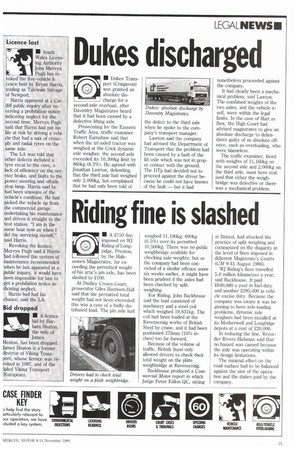Dukes discharged
Page 23

If you've noticed an error in this article please click here to report it so we can fix it.
• Dukes Transport (Craigavon) was granted an absolute discharge for a second-axle overload, after Daventry Magistrates heard that it had been caused by a defective lifting axle.
Prosecuting for the Eastern Traffic Area, traffic examiner Robert Earnshaw said that when the tri-axled tractor was weighed at the Crick dynamic axle weigher, the second axle exceeded its 10,300kg limit by 860kg (8.3%). He agreed with Jonathan Lawton, defending, that the third axle had weighed only 2,000kg, but complained that he had only been told of the defect to the third axle when he spoke to the company's transport manager.
Lawton said the company had advised the Department of Transport that the problem had been caused by a fault of the lift-axle which was not in proper contact with the ground. The DTp had decided not to proceed against the driver because he could not have known of the fault — but it had nonetheless proceeded against the company.
It had clearly been a mechanical problem, said Lawton. The combined weights of the two axles, and the vehicle itself, were within the legal limits. In the case of Hart vs Bex, the High Court had advised magistrates to give an absolute discharge to defendants guilty of an absolute offence, such as overloading, who were blameless.
The traffic examiner, faced with weights of 11,160kg on the second axle and 2,000kg on the third axle, must have realised that either the weighbridge was defective or there was a mechanical problem.




























































































































